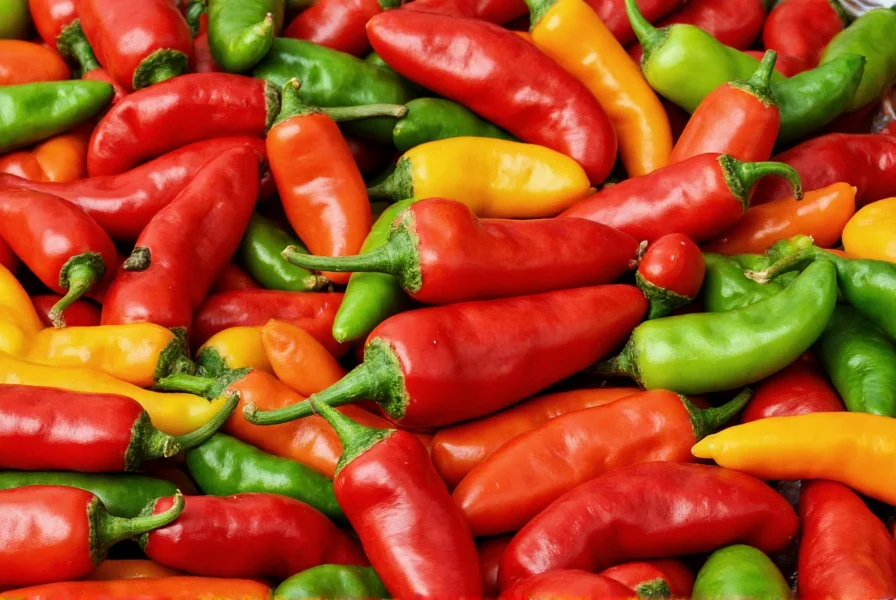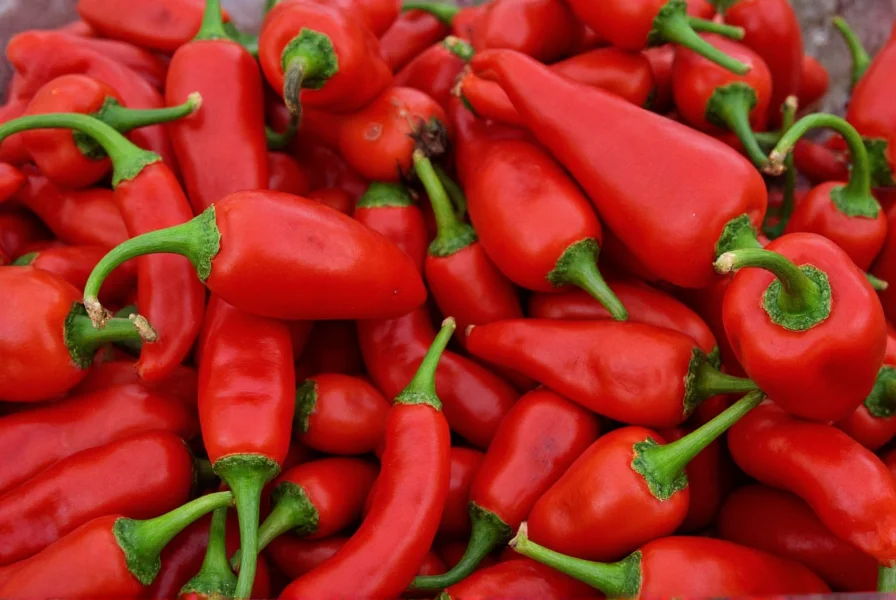The Scoville scale remains the global standard for measuring pepper heat, but understanding its nuances can transform how you select and use chili peppers in cooking, gardening, and food science applications. This comprehensive guide explores the science behind pepper spiciness, provides practical reference data for common varieties, and explains how to apply this knowledge in real-world scenarios.
How the Scoville Scale Works: From Human Testing to Scientific Precision
Wilbur Scoville's original 1912 method, called the Scoville Organoleptic Test, involved diluting pepper extract in sugar water until the heat became undetectable to a panel of five human testers. The degree of dilution determined the Scoville rating—for example, a 5,000 SHU pepper required dilution to 1 part in 5,000 before the heat disappeared.
Modern laboratories now use high-performance liquid chromatography (HPLC) to precisely measure capsaicinoid concentration, then convert these measurements to Scoville Heat Units using a standardized formula. This scientific approach eliminates human subjectivity while maintaining compatibility with the original scale that consumers recognize.
Pepper Heat Reference Chart: Understanding SHU Measurements
| Pepper Variety | Scoville Heat Units (SHU) | Heat Level Description |
|---|---|---|
| Bell Pepper | 0 SHU | No heat |
| Pepperoncini | 100-500 SHU | Mild, barely noticeable |
| Jalapeño | 2,500-8,000 SHU | Moderate heat, widely used |
| Habanero | 100,000-350,000 SHU | Very hot, fruity flavor |
| Ghost Pepper (Bhut Jolokia) | 800,000-1,041,427 SHU | Extreme heat, requires caution |
| Carolina Reaper | 1,400,000-2,200,000 SHU | World's hottest, intense burning sensation |
Practical Applications of Scoville Measurements
Understanding pepper heat levels serves multiple practical purposes beyond satisfying curiosity about how scoville scale works for different chili varieties. Culinary professionals use this knowledge to create balanced dishes, while home cooks can avoid unpleasant surprises when experimenting with new recipes.
When substituting peppers in recipes, consider both the Scoville rating and flavor profile. A Serrano (10,000-23,000 SHU) provides similar citrus notes to a Jalapeño but with significantly more heat. For those sensitive to spice, removing seeds and white membranes—which contain most capsaicin—can reduce heat by up to 80% without sacrificing flavor.
Factors Affecting Pepper Heat Perception
Several variables influence how we experience pepper spiciness measurement, making the Scoville scale just one factor in understanding heat:
- Growing conditions: Soil composition, climate, and water stress can cause SHU variations of 30-50% in the same pepper variety
- Ripeness: Fully ripe peppers often register higher on the scoville heat units explained scale than their unripe counterparts
- Individual tolerance: Genetic differences affect capsaicin receptor sensitivity, explaining why some people handle extreme heat better than others
- Food matrix: Fats and sugars in dishes can mitigate perceived heat, making the same pepper seem milder in certain preparations

Limitations of the Scoville Scale and Modern Alternatives
While the Scoville scale remains culturally significant, it has scientific limitations. The original taste-test method suffered from human subjectivity, and even modern HPLC measurements don't account for how different capsaicinoids affect heat perception. For example, nordihydrocapsaicin produces a different burning sensation than capsaicin despite similar molecular weights.
Researchers now use more precise measurements like ASTA pungency units, which quantify total capsaicinoid content without conversion to Scoville units. However, the Scoville scale persists in popular culture due to its intuitive nature—people understand that 500,000 SHU means "very hot" even without scientific context.
Using Scoville Information Responsibly
When working with extremely hot peppers (above 100,000 SHU), proper safety precautions are essential. Always wear gloves when handling, avoid touching your face, and have dairy products like milk or yogurt nearby to neutralize capsaicin. Never attempt to consume pure capsaicin extract—concentrations above 16 million SHU can cause serious health issues.
For culinary applications, start with small amounts of hot peppers and gradually increase to achieve desired heat levels. Remember that cooking can concentrate heat as water evaporates, while acidic ingredients like lime juice can enhance perceived spiciness.
Frequently Asked Questions
What pepper has the highest Scoville rating?
The Carolina Reaper currently holds the Guinness World Record for hottest pepper, with an average Scoville rating of 1.6 million SHU and individual specimens reaching up to 2.2 million SHU. It was officially recognized as the world's hottest pepper in 2013, surpassing the previous record holder, the Trinidad Moruga Scorpion.
How does the Scoville scale compare to other heat measurement systems?
The Scoville scale differs from scientific measurements like ASTA pungency units, which directly quantify capsaicinoid concentration without human sensory input. While Scoville ratings are expressed in dilution factors (SHU), ASTA units measure parts per million of capsaicinoids. One Scoville unit roughly equals 15-16 ASTA pungency units, but the relationship isn't perfectly linear across all heat levels.
Can cooking methods affect a pepper's Scoville rating?
Cooking doesn't change a pepper's actual Scoville rating, which measures capsaicin concentration. However, preparation methods significantly impact perceived heat. Roasting can mellow flavors while concentrating heat, drying peppers often increases perceived spiciness, and adding fats or dairy can mitigate the burning sensation. Removing seeds and membranes reduces heat by up to 80% since these parts contain the highest capsaicin concentrations.
Why do some Jalapeños taste much hotter than others?
Jalapeño heat varies due to growing conditions, ripeness, and genetics. Stress factors like inconsistent watering, temperature fluctuations, and soil composition can increase capsaicin production. A single Jalapeño plant may produce peppers ranging from 2,500 to 8,000 SHU. The white stretch marks (corking) often seen on Jalapeños indicate stress during growth, which typically correlates with higher heat levels.











 浙公网安备
33010002000092号
浙公网安备
33010002000092号 浙B2-20120091-4
浙B2-20120091-4